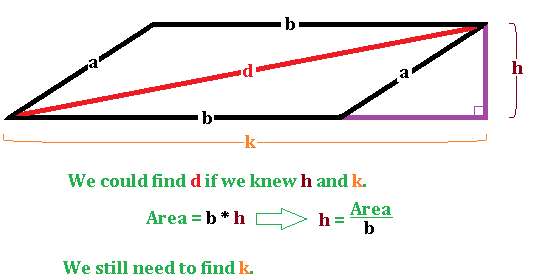A parallelogram has sides with lengths of #15 # and #12 #. If the parallelogram's area is #48 #, what is the length of its longest diagonal?
2 Answers
The longer diagonal is
Explanation:
We know the area of the parallelogram as
Longer diagonal can be found by applying cosine law:
Longest diagonal
(this answer included as a more Geometric solution than the excellent answer by Binayaka C which relies on more Trigonometric knowledge)
Explanation:
We are asked to find the length of the longest diagonal of a parallelogram.
We could, in general, imagine an image like the one below.

For this specific question we are told that
One of the Geometric tools that we have for finding a length is the Pythagorean Theorem.
If we could extend the base (the side with length

For this specific question, we know that
We are only left with finding the length of the extended side,
But
And we can find the value of

For this specific question
The length of the extended base is
By the Pythagorean Theorem, the length of the required diagonal is
